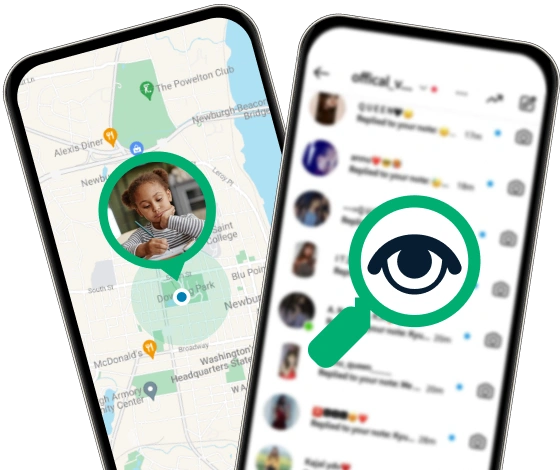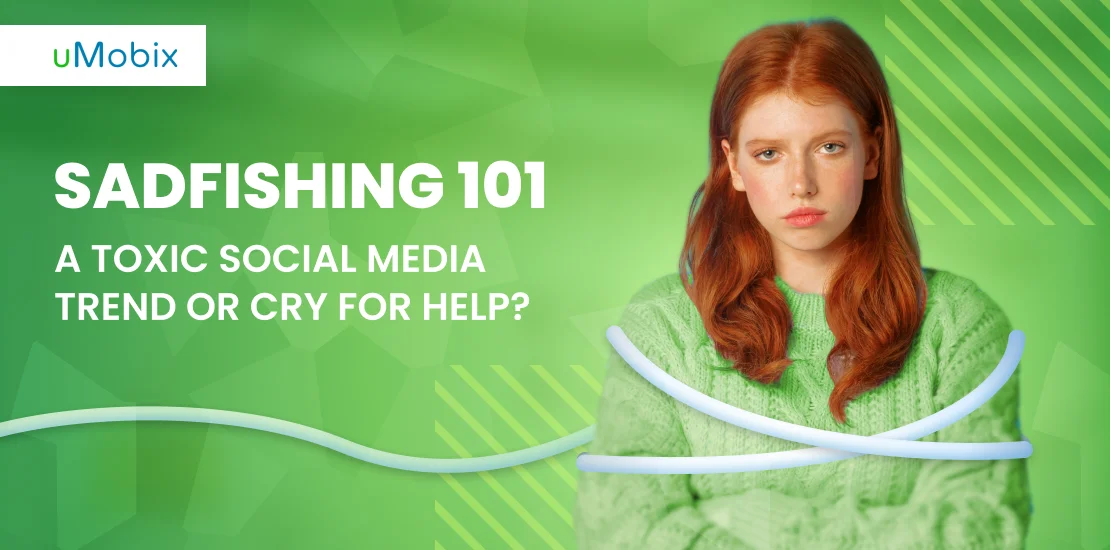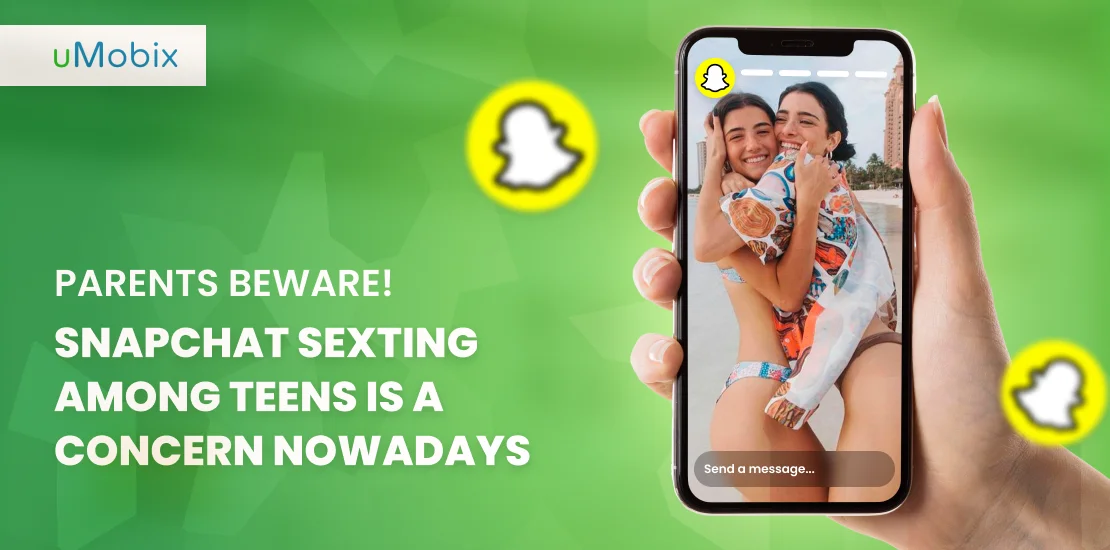Have you ever come across an overly emotional post on social media? These may be typical teenager posts, or they may even come from older adults looking for attention. Posts, reels, memes, and cryptically sad comments that seem attention-seeking may be a cry for help or something else. Kids, in particular, often share more about their personal lives online than they should.
In this article, uMobix, a parental control app, will tell you more about the sadfishing meaning, its risks and provide qualified recommendations to help you protect your child from this kind of online danger. Ready to start?
What Is Sadfishing?
Before we start, let’s first explain the sadfishing meaning and how the sadfish appeared.
Sadfishing Meaning
So, what is sadfishing? Sadfishing is a relatively new label that describes an age-old behavior. Attention-seeking actions, such as making up stories or lying for attention and sympathy, explains the premise behind sadfishing.
The term was coined by Rebecca Reid in 2019. She is a journalist who called out Kendall Jenner over her social media post regarding her acne struggles. Unfortunately, instead of being a voice of common ground, the posts were actually created to promote products to unsuspecting teenagers. Thus, the sadfish label was born.
Sadfishing Examples
For parents, it can be hard to understand when a teenager makes up stories for attention and when they are suffering from emotional distress. It is normal to crave attention from one’s parents or peers. Creating a false narrative to garner said attention is where the problem lies.
According to the Forbes report, “Sadfishing, however, is the act of manipulating others’ emotions for personal gain” and “instead of fostering genuine connections, sadfishing creates a divide of distrust and emotional detachment for similar posts online”.
Here are a few examples of sadfish behavior that kids might engage in:
- Attention-seeking posts: “I am so lonely, no one loves me”.
- Dramatic situations: “It was the worst day in my life”.
- Vague messages: “Nobody can tell me this” (especially without explanation).
While some posts, behaviors, and comments may be real, others are manipulative. It can result in others who have been victims of manipulation labeling everything as sadfishing on social media to reclaim their own power.
Sadfishing: Teenager Attention-Seeking Symptoms
There are risks to ignoring emotional responses in teens. Generally, adolescents and teenagers are more prone to anxiety, feelings of loneliness, distress, and other forms of emotional suffering. Puberty brings drastic changes in hormones, often paired with the pressure of fitting in at junior high and high school. The signs of bullying and peer pressure are often easy to spot; however, they can be easily confused with the behaviors of someone who craves attention.
Some sadfish signs to look for are:
- A teen making overly sad or dramatic posts online while behaving normally in person.
- Performative behaviors that only occur when there is an audience.
- Engaging in risky behavior to garner attention.
- Behaving or posting in a way that is out of character.
- An extreme focus on how others react to their social media posts.
- Creating fantastic stories or scenarios to get attention.
Risks of Sadfishing
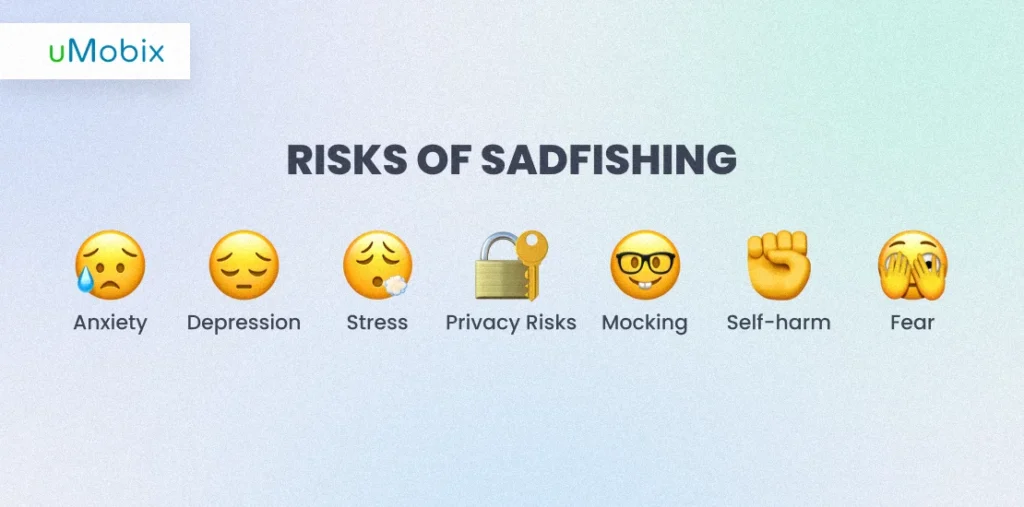
According to the BMC report, in most cases, responses to sadfishing posts were positive and supportive. However, some were negative and resulted in increased stress, fear, and anxiety. When a social media post doesn’t get supportive responses, it can lead to teasing or mocking, even if the post is real. While any attention might feel good to a child or teen who feels ignored, it can also expose them to privacy risks and predators.
Some social media interactions have even been linked to self-harm. Relying on social media instead of building real-life relationships can make kids feel isolated and disconnected.
5 Things Parents Can Do About Teen Sadfishing
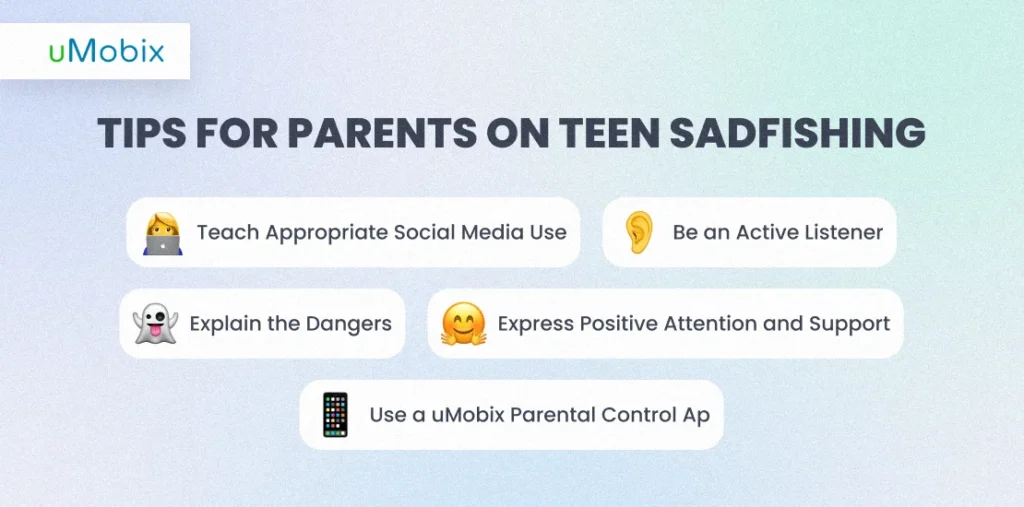
Sadfishing can become problematic if left unchecked. It is also important to know when a teen may be crying for attention due to depression. Using strong parental control tools such as uMobix on anything connected to the internet is critical. Aside from that, there are 5 main things parents can do to combat various forms of attention-seeking behavior.
How to Talk to Your Teen About Sadfishing?
Talk with your kid about sadfishing. If they post sadfishing content (photos or text) online, ask them why they are doing so. If one of their friends does it, talk about the possible dangers it can lead to. Always prioritize open communication, be friendly, and try not to judge them for their actions – otherwise, they will not tell you anything. You will hear nothing but silence when trying to clarify the situation the next time.
Explain to your kid that the best way to answer their friends’ sadfishing post is to reach them directly and ask them to walk together, for example.
Tell your kid that being sad is okay, and everyone feels sadness, so it’s not the reason to share it publicly using the sadfish tactic. The more someone sadfishes, the less people will take them seriously, which is not what they want. Remind your kid that if they’re feeling lonely or sad, they can hang out with friends, talk with you, do things to boost their self-esteem offline, or ask for help.
Be an Active Listener
When it comes to sad teens, being an active listener is important. Pay close attention to what your child says, even if it seems overly dramatic. Often, teens will have trouble expressing themselves eloquently, leading to their feelings being dismissed or ignored.
Express Positive Attention and Support
Online predators often provide supportive communication for kids, which may open the door for manipulation. Providing your teenager with positive attention and support is the best way to reduce their dependence on outside attention. Interact with them when they share their goals, dreams, and failures.
Teach Appropriate Social Media Use
The internet is a great tool, but it also carries many risks with it. It is important to start teaching online safety well ahead of adolescence. Teach your teen the dangers of oversharing on social media. It is also important to caution against anonymous chatrooms, e.g., Omegle, and messaging apps on social media.
Explain the Dangers
The risks of sadfishing are more than just being viewed as being overdramatic. There are real dangers that come from oversharing online. Explaining the dangers that come from sharing excessively emotional information online is critical. Some dangers are:
- Increased chance of being cyberbullied.
- Increased chance of developing anxiety or depression.
- A teen may engage in suicidal behavior to gain more attention.
- It may increase passive-aggressive behavior in vulnerable teens.
- This may result in a lower sense of self-worth.
- This can lead to antisocial behavior over time.
- Constant sadfishing can lead to chronic fatigue and decreased moods.
- The feeling of loneliness may increase if social media posts don’t generate the expected responses.
Use a uMobix Parental Control App
Monitoring online activity is the best way to keep kids safe. Placing a focus on in-person connections and interactions is also important. In this digital age, there is no way to completely avoid social media and online interactions. Still, you can monitor your children’s activities with a parental control app and stay in the loop about their well-being.
uMobix will allow parents to track text messages, monitor social media usage, and more. The app features real-time updates that will also log keystrokes, monitor phone calls, real-time location, and even track videos and photos on the child’s device. The most important feature, however, is the GPS location setting, which provides real-time location information and visited places’ history.

You will get access to all the text messages, files, and photos they send, receive, and even delete when using popular IM apps and social media platforms. Suppose they use dating apps, visit malicious forums, attend online chat rooms, age-inappropriate websites, or play suspicious online games. In that case, you will also know about it and block their access remotely if needed.
The uMobix’s killer feature is that you will get full access to their Instagram and Facebook accounts, meaning you can manage them as if they were yours. So, if they decide to share a sadfishing post, you can delete it and find out about their mood.
How to Prevent Sadfishing?
We covered some sadfishing examples earlier in the post, but it is equally important to help prevent it from occurring. Here are a few recommendations taht will help you protect your kid and to avoid sadfishing.
- It is important to stay as connected as possible with your teen, especially online.
- Along with using parental controls and monitoring apps, ensure you view their social media feed.
- If your child makes overly emotional comments or posts, consider speaking to them about it.
- Avoid being judgmental or overly reactive. Alternatively, make a point of actively listening and opening yourself to appreciating what they may be experiencing.
- Always ensure your teen understands that you support and love them regardless of the situation. Knowing they have your unconditional support will encourage them to turn to you for help instead of strangers online.
- Most teens will always turn to their peers for certain issues, but knowing that you have their back will keep them from making excessively risky choices online.
Wrapping Up
Sadfishing is more than just a trend. Attention-seeking behavior has been around for quite some time. With the digital era in full swing, sadfishing has become an epidemic. It exposes children, adolescents, and teenagers to various dangers online that can be hard to combat with passive advice alone. Using parental control programs, monitoring your teen’s social media usage, and maintaining an active role can help keep them safe in the current digital landscape.
While some posts might be harmless, others can point to real issues or lead to problems like cyberbullying, stress, and unwanted attention from strangers. As a parent, staying aware and involved is key. With uMobix on your side, you will be certain your kid is safe and sound when being online, and, more importantly, you can instantly respond to any problems your kid may encounter. Combined with open and supportive conversations, it’s a great way to help your teen navigate social media safely.
